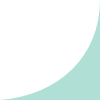Dialogue
It’s only through innovative scientific discoveries that new medicines against cancer can be developed. But the road from lab to medicine is often a bumpy one, also in oncology. Many scientific breakthroughs fail to materialize into drugs - even when they have great potential. So, what are key requirements to successfully bridge the gap between lab and market?

Andrea
van Elsas
CSO at Aduro Biotech and was a driving force behind the creation of two key immunotherapy medicines as a co-inventor
Jannie
Borst
Professor in Immunology at the Leiden University Medical Center and Oncode Investigator



Turning scientific discoveries into medicines

Immunotherapy is now a celebrated research field that is considered to hold great promise, but it held a marginal position in oncology for decades and was even frowned upon. What lessons can we learn from this, when it comes to bridging the gap between university lab and market?
Andrea: “In my view, the late breakthrough of immunotherapy, which happened in 2010, simply shows the meandering way in which new science is translated into medical practice, rather than the pharmaceutical industry not appreciating or understanding the field’s value. Pharmaceutical companies did invest heavily in immunotherapy in the Eighties and Nineties. But this expenditure didn’t yield results, because what they tried, such as vaccines, didn’t work. Surgery, chemotherapy and radiotherapy therefore continued to be the main approaches to fight cancer.”
“As soon as solid clinical evidence emerged that immunotherapy could work, that all changed. This became possible with the invention, and the first application, of so-called immune checkpoint inhibitors. Immune checkpoint proteins can dampen the immune system and thereby prevent T-cells, a type of immune cells, from attacking and destroying cancer cells. By inhibiting these checkpoint proteins, the immune system can become active again and attack tumor cells. Proof of this hypothesis was shown at the annual meeting of the American Society of Clinical Oncology, held in June 2010. Physician Stephen Hodi demonstrated that Ipilimumab™, which blocks the immune checkpoint protein CTLA4, extends the overall survival of patients suffering from melanoma – a type of skin cancer that was previously untreatable. That was a turning point.“
Jannie: “I agree. Besides the Leiden University Medical Center, I also work for the Netherlands Cancer Institute. When I started there in 1992, there was just one Department of Immunology. The other 11 departments were all dedicated to researching how cells can turn into tumor cells. Many of the cancer researchers had no idea what the immunologists were doing! But following 2010 that changed quickly and now the situation is almost reversed, with immunology dominating cutting edge cancer research. In my experience, in research things change often.”
“In the case of immunotherapy of cancer, many attempts had been made in the clinic before, but scientific insights into the workings of the immune system remained limited for long. The lack of success of the early approaches then raised skepticism about the concept of immunotherapy in general.”
When I started at the NKI in 1992, there was just one Department of Immunology. The situation is almost reversed, with immunology dominating cutting edge cancer research.
Jannie Borst

What challenges can arise when you have an amazing scientific discovery, but in a field that as whole still lacks credibility?
Andrea: “Well, it can make it harder to convince others of investing in the development of your product. In that sense the uptake of scientific discoveries isn’t just about science, but also about people. Particularly in a context where little credibility has already been built up, it’s essential to have access to gatekeepers, people that will help push your idea onto the agenda of the pharmaceutical industry – and keep it there. In my case, I was lucky to have access to people who really believed in the value of my findings, including decision makers who supported further investments in it, in the eye of much competition of other projects.”

This sounds as even after a company has accepted to work on your medicine, new obstacles can still emerge. Is that indeed the case?
Jannie: “Yes, definitely. Before a drug can enter the market, a lot of expensive preclinical manufacturing, safety testing and of course clinical trials have to be done. These may introduce new hurdles and challenges.”
Andrea: “Another potential bottleneck is that a candidate medicine is likely to change hands many times; it’s fairly common for pharmaceutical companies to change owners or merge with others. Following a merger, the company’s new leadership will usually review the combined portfolio. This can cause them to announce entirely different priorities, which may clash with what you are seeking to develop or are working on. For instance, I led a project at Organon, a former pharmaceutical company headquartered in the Netherlands, investigating a PD1 antibody. It underwent two acquisitions and subsequent portfolio reviews, before it became pembrolizumab, now on the market as another immune checkpoint drug to treat several types of cancer. This makes the translation of a scientific finding into a drug a fickle process. As my former mentor and biochemist Wiebe Olijve puts it: ‘each successful drug that made it to the market got killed off at least twice along the way’.”
As my former mentor and biochemist Wiebe Olijve puts it: ‘each successful drug that made it to the market got killed off at least twice along the way’.
Andrea van Elsas
Jannie: “Even if a given scientific discovery is ultimately turned into a medicine that can enter the market, ten to fifteen years could easily have passed. Often the person who started the process isn’t the one who sees the finalization of the medicine.”
Andrea: “It’s in that sense important not to view the creation of a medicine as a personal endeavor, because it really isn’t. Creating drugs is a team effort. It requires an army of scientists from different disciplines. Biologists, toxicologists, chemists, clinical development and regulatory specialists and company lawyers, to name a few. Which is another reason why the development of a medicine is so unpredictable.”
Clearly the uptake of a certain scientific discovery by a pharmaceutical company offers no guarantee that it will materialize into a drug. But many fundamental researchers are struggling to find investors at all for their scientific discoveries, even when these yield valuable results. What’s your advice to them?

Jannie: “When you do fundamental research, the gap with the market may simply be too great to bridge, unless you have access to people that have valuable contacts within the pharmaceutical industry. Having said that, scientists have additional opportunities to create a link with business these days. By setting up a spin-off company, you can try and secure venture capital, for instance.”
Andrea: “Adopting another outlook can also help. When academics make a major discovery, they tend to share that news with peers at a conference or through a publication. But to get pharmaceutical companies interested in your discovery or to be able to obtain venture capital funding, you need to put your discovery into a patent application before publishing it elsewhere.”
Jannie: “University technology transfer offices can help with that, and Oncode Institute also has a complete Valorization Team available to help with this.”
What can organizations that fund scientific research do to try and close the gap between academia and market?

Andrea: “Institutes like Oncode are an important way forward, by supporting the translation of scientific discoveries into clinical reality and by facilitating contacts between industry and universities. It might also be worthwhile to invest more in soft skills such as teamwork and portfolio management. These can help scientists to successfully navigate company politics that also play a part in the development of a medicine.”
Jannie: “Having more collaborative programs between universities and companies would be great. For instance, Andrea and I previously collaborated in Top Institute Pharma, which ran between 2007 and 2013. This was a large-scale effort, co-funded by the Dutch government and launched on the request of various industrial players and main academic institutions, to create public-private partnerships.”
“Patent filing went superb, thanks to the expertise of the industry partners. Top Institute Pharma led to various valuable discoveries. For instance, an antibody that came out of the earlier-mentioned research that Andrea and I undertook is currently being tested in clinical trails. It was further developed in a biotech company that Andrea and scientist-entrepreneurs Hans van Eenennaam and Wiebe Olijve set up – also through Top Institute Pharma.”
